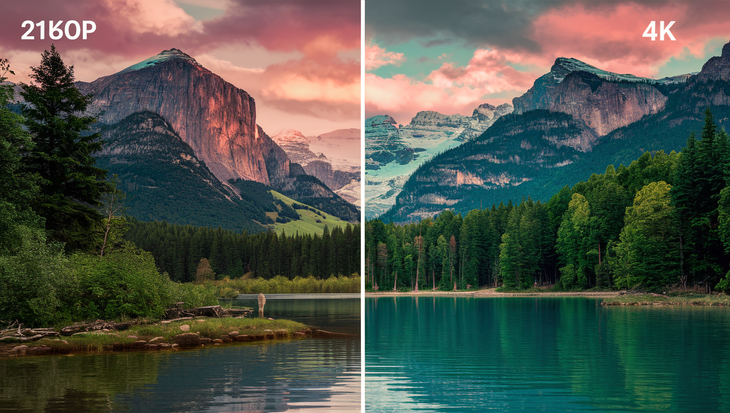
2160p VS. 4K: What's the Difference
Nowadays, there are certain terms used interchangeably when it comes to describing the quality of videos, such as ‘2160p’ and ‘4K’. But does this mean that they are one and the same? As much as 2160p and 4K are somewhat related, they have differences in certain aspects.
What is 2160p?
2160p is used to depict a video resolution of 3840 by 2160. The “p” stands for “progressive scan” this means that all the lines are drawn in completeness starting with first line then the next and so on until the whole picture is complete. This leads to a fine, progressive image, rather than interlaced as in other lower resolutions.
2160p is so named because of its approximately 2,160 horizontal line of vertical lines. Since 2160p has a general aspect ratio of 16:9, the maximum width of this product is 3840, while the height is 2160. Some other resolutions present in this family are 1080p and 720p.
What is 4K?
4K is a more ambiguous term which can mean any resolution that lies in the vicinity of 4,000 pixels horizontally. The Consumer Technology Association (CTA) established the true standard definition of 4K which is also referred to as Ultra HD or UHD as any display that has 3,840 pixels in the horizontal line.
And while 4K sets horizontal pixels as a standard, 2160p itself is an exact resolution with the definite number of vertical pixels. Despite claiming to support 4K, most media and devices available really mean the particular resolution of 3840 x 2160. So, in actual usage, 4K, 2160p and UHD are used interchangeably to signify the same thing.
Nevertheless, 4K is still sometimes used in an improper manner to refer to future 8K displays too. 8K provides an absolutely enormous resolution of 7,680 horizontal pixels and 4,320 vertical ones, making a total of approximately 32.8 million pixels. It is going to remain such a resolution for quite a number of years more to be considered as mainstream.
2160p or Real 4K Cinema Display Resolution
Even when it comes to professional cinema end cameras and projectors the debate rages on in regards to what true 4K really is. This is where things get even more differentiated as far as terminology is concerned.
Digital cinema projectors commonly used in commercial theaters are typically 4096 x 2160, which are much broader than 3840 x 2160 consumer displays. Theoretical approaches: Some cinematographers assert this wider, more theatrical aspect ratio is the only one that should be termed 4K. By that reasoning, the 3840 x 2160 resolution that most buyers are likely to encounter does not meet that criterion either.
That is a discussion for a different day since 3840 x 2160 is the universally accepted format for 4K across the Consumer TV and Devices industry.
2160p: The Bottom Line
In short, the term 2160p resolution at any given time unerringly refers to a pixel count of 3840 widths by 2160 height. 4K can refer to any resolution in the vicinity of 4,000 pixels wide, with the term’s current popular usage synonymous with 2160p, particularly in reference to UHD TVs, monitors, and smartphones.
So the next time you come across next generation 4K TVs that boast of 2160p resolution, know that both terms refer to the same Ultra HD 3840 x 2160 standard.
Protect what matters most. Dial +1 888-805-5456 for the best home security solutions.






